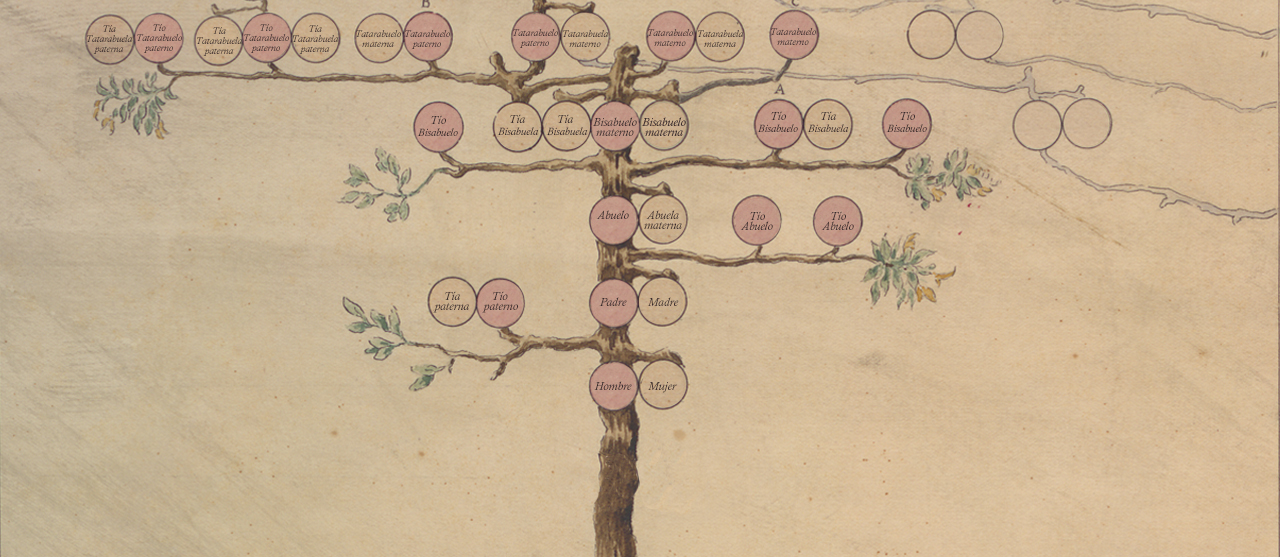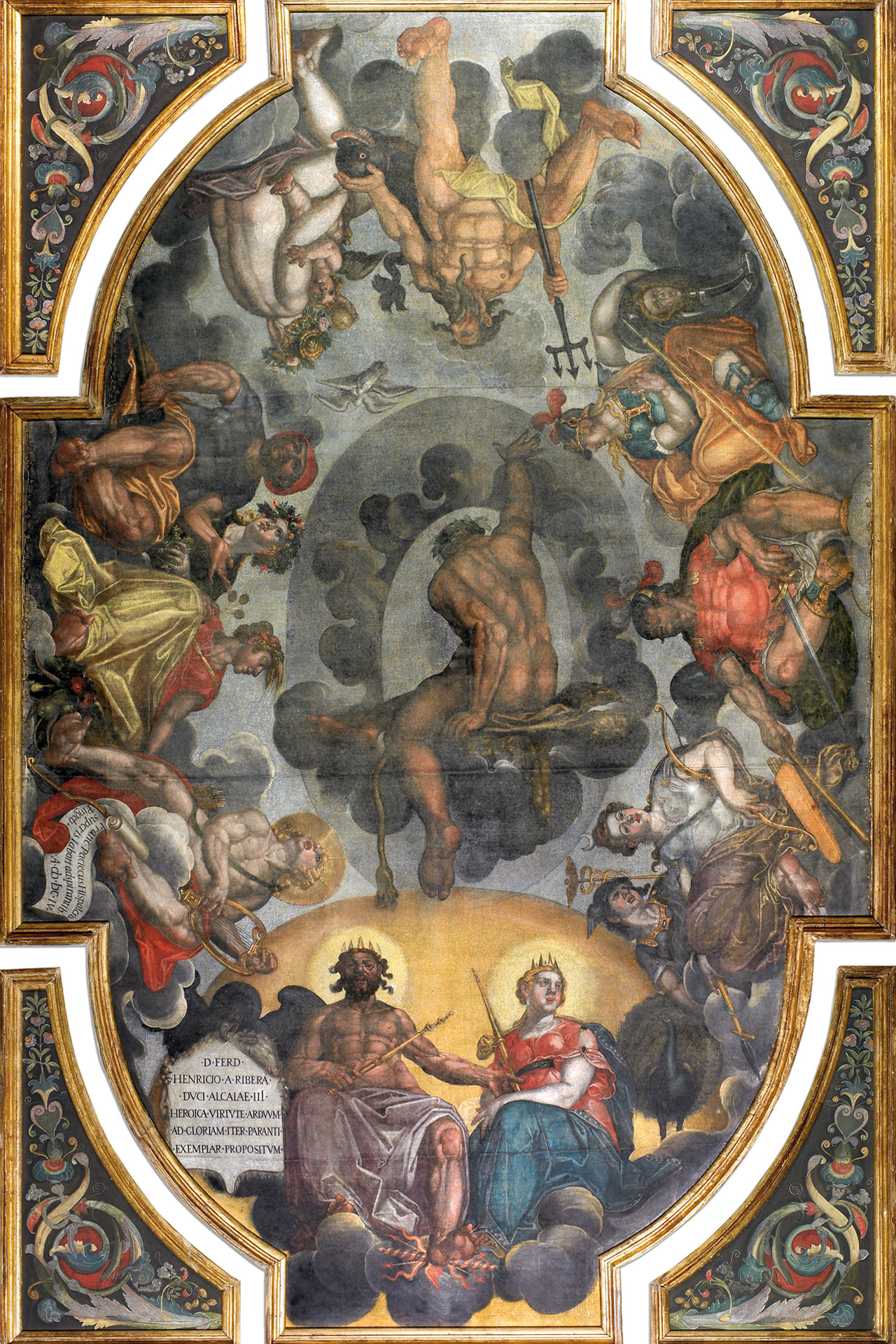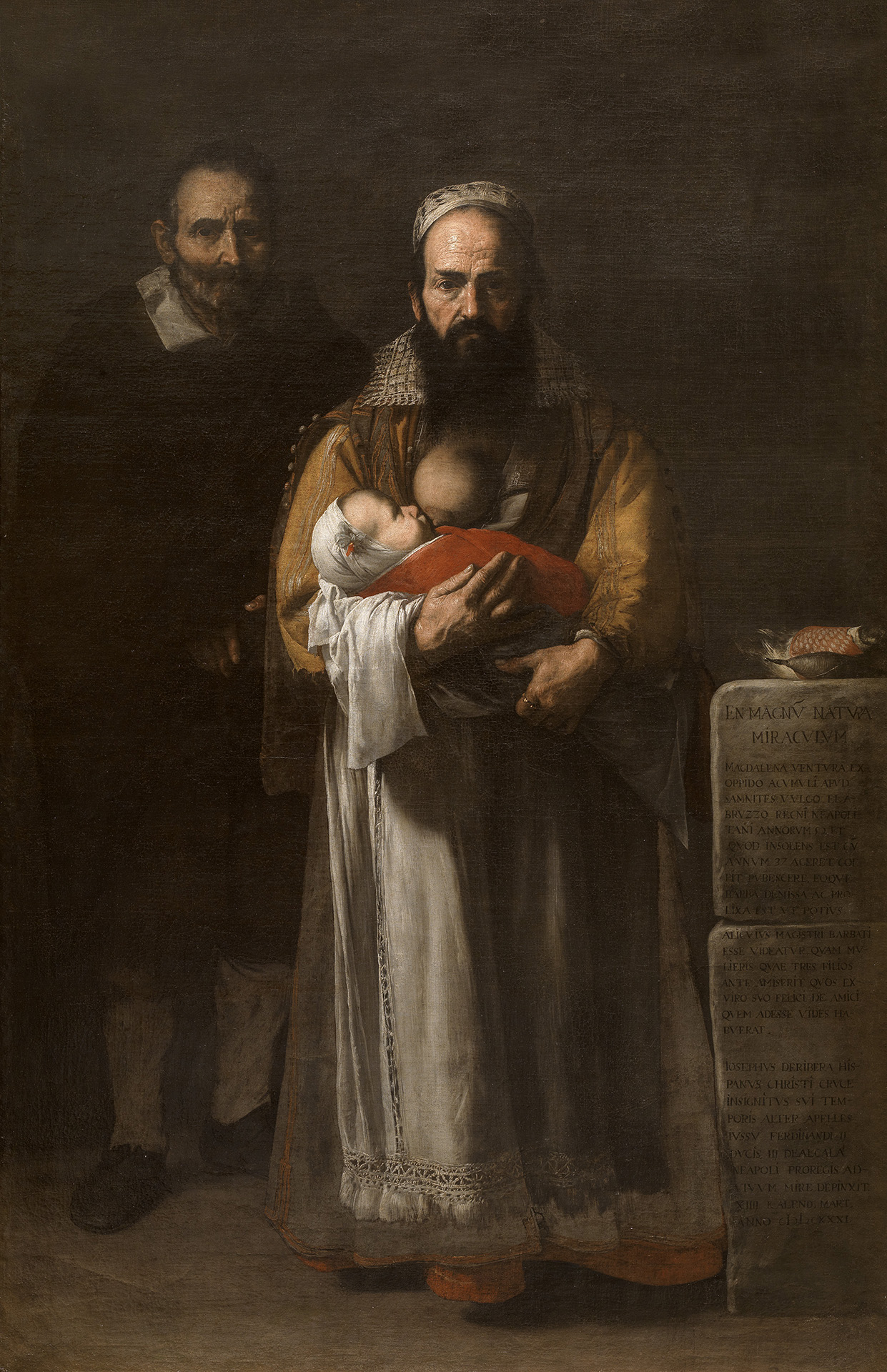3rd Duke of Alcalá de los Gazules
Fernando Afán de Ribera (1583-1637)
The 3rd Duke of Alcalá, son of the IV Marquis of Tarifa and of Ana Girón -daughter of the first Dukes of Osuna, was born in Seville on 10 May 1583, in a family environment imbued with a cult of letters. Orphaned at the age of seven, he nevertheless received a careful classical education and soon showed a strong inclination towards the humanities. Under his patronage, his Sevillian palace, the Casa de Pilatos became a centre of attraction for the city's best intellectuals and artists. that gathered there to form a sort of a coterie or academy informal, which, to a large extent, continued that which his father had maintained in the Huerta del Rey, an old Almohad suburban palace acquired by Catalina de Ribera and reformed by his son, the 1st Marquis of Tarifa.
He was only fourteen years old, when he was already Duke of Alcalá, married Beatriz de MouraShe was the daughter of Cristóbal de Moura - a nobleman of Portuguese origin, one of Philip II's closest circle of collaborators, whom Philip III created Marquis of Castel-Rodrigo. The young duke's intellectual and artistic patronage began very early. At the age of fifteen, he took advantage of a trip to Madrid for the funeral of the prudent king to have his portrait taken by Pantoja de la Cruz and perhaps to acquire some still lifes by Antonio Mohedano which may have been the first seen by the young Velázquez, whose master and later father-in-law, Francisco Pacheco, a regular at the Casa de Pilatos, was to become an adviser and connoisseur of the pictorial collection that he assembled in this palace. At the age of 20, in 1603, he commissioned the aforementioned Francisco Pacheco the canvases of the ceiling covering the Camarín Grande of his palace in Seville, where the aforementioned gathering used to meet. A year later, the architect Juan de Oviedo began, above the original cloakroom of the Marquis of Tarifa, the work of the library and armouryThe Duke of Alcalá bought it in 1606 for three thousand ducats of gold, Luciano Negrón's five thousand book collectiona canon of Genoese origin, a famous bibliophile who held the post of examiner of books for the Holy Office, a collection which, according to Pacheco, contained "all faculties and languages" and was part of that of Ambrosio de Morales.
In 1618 he was appointed Viceroy of Cataloniawhere, in addition to some bitter disagreements with the institutions of the principality, he gave the first signs of his interest in antique collecting following in the footsteps of his great-uncle, the 1st Duke of Alcalá, although in a very different tone, in keeping with the times, less interested in the beauty of classical sculpture and more in archaeological objects as monuments - in their etymological meaning of instruments of memory - and so they preferred to collect epigraphic materials, such as coins, tombstones, pedestals, etc., like those that can still be seen in the lower gallery of the Jardín Chico of the Casa de Pilatos.
His first trip to Italy he made it rather late, at the age of 43, as a Ambassador Extraordinary to render obedience to the new pope Urban VIII. J. Brown and R. Kagan consider that, from the acquisitions he made and the gifts he received from the cities through which he passed, from Genoa to Naples, he must have had a fairly well-formed taste, as they are all very representative of the final collection as a whole. Three years later, in 1629, he attained the viceroyalty of Naples The Duke of Alba, whose welcome gift of a painting of "Preparations for the Crucifixion" must have been his first contact with the work of José de Ribera, a painting which in the 18th century was deposited in the church of Santa María de Cogolludo, patronage of the House of Medinaceli, where it remains today.
Accusations stemming from the animosity felt towards him since he had been replaced in the viceroyalty of Naples by the 4th Duke of Alba, a brother-in-law of the king's valid Count-Duke of Olivares, on the pretext of a ceremonial problem with the visit of Queen Mary of Hungary, Philip IV's sister, forced him to leave Italy in haste. Despite the short time he spent in Naples, he returned to Spain with 24 crates full of works of art, including 76 paintings.
The inventory carried out in the last years of his life includes 464 paintings and numerous sculptures which, although far removed from the later collections of the Marquises of Leganés and del Carpio, are superior to many others: in terms of subject matter, with a relatively equal number of portraits and religious paintings, and a significant presence of landscapes, mythology and still lifes; and in terms of style, revealing - in the few paintings that can be identified with certainty - a a taste for Caravaggesque-inspired tenebrismDuring his stays in Italy, he reaffirmed his aesthetic option by sponsoring artists such as Jose de Ribera o Artemisia Gentileschi. For both reasons, the collection is comparable to those of the best collectors of his time. It is only in the enormous quantity of small sculpture, especially bronze, with a predominance of the work of GiambolognaThis collection is unusual.
In 1632 he returned to Italy, to the viceroyalty of Sicily, with the vague promise - never to be fulfilled - to retake the viceroyalty of Naples. He died in 1637, on his way to Cologne where he was going as Ambassador Plenipotentiary. to negotiate a peace to end the war raging in Europe, now known as the Thirty Years' War.
The end of his life was a real dramaThe succession of deaths of his sons and brothers reduced the number of possible successors, so that, after the short-lived succession of his daughter María, married to the Prince of Paternó and deceased, he had to leave the family. in 1639, the Houses and Estates of Alcalá -the County of Los Molares, the Marquisate of Tarifa and the Duchy of Alcalá de los Gazules and with them the real estate properties linked to each, including the Casa de Pilatos. finally went to his maternal niece, Ana María Enríquez de Ribera, daughter of his younger and favourite brother Don Pedro Girón, who, through her mother, was also the Marquise of Alcalá de la Alameda and was married since 1625 to the VII Duke of Medinaceli.



